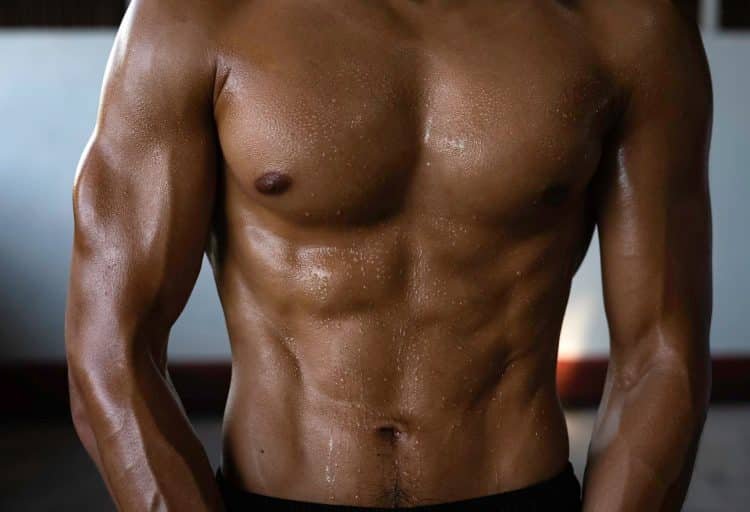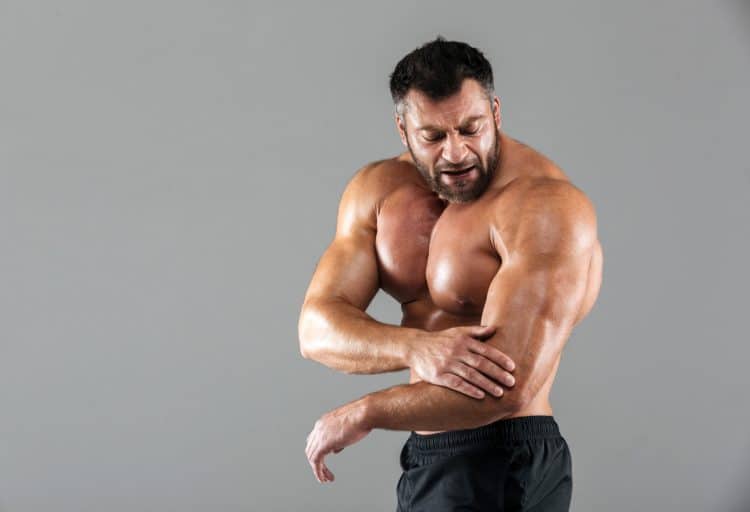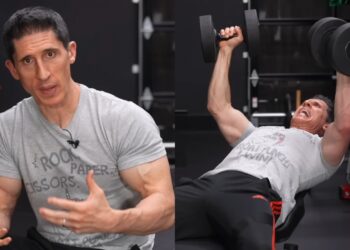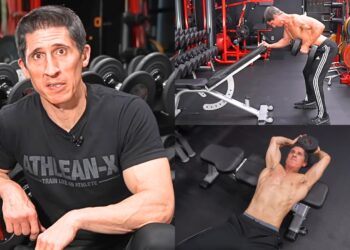Whatever your fitness goal is, reaching it will probably be an expensive endeavor. There is a steep cost to building muscle, getting stronger, or getting lean.
Those costs include training time, energy, dedication, and motivation. There are actual monetary costs, too, such as buying healthy food and supplements and paying your gym fees.
With all that in mind, it makes sense to try and get the best return for your investment. In other words, your workouts really ought to be as productive as possible.
Unfortunately, many people misdirect their energies, misuse their time, waste their money, and fail to get the results they want from their workouts. Instead, they’re often led astray by misinformation.
In this article, we examine the false positives of an effective workout. These are the things that a lot of people experience or even pursue that do NOT have much of an impact on your training results. Workout false positives fool you into thinking that you are making progress
At the end, we’ll tell you what you need to do to ensure your workouts are productive.
Level Up Your Fitness: Join our 💪 strong community in Fitness Volt Newsletter. Get daily inspiration, expert-backed workouts, nutrition tips, the latest in strength sports, and the support you need to reach your goals. Subscribe for free!
Six False Positives Effective Workouts
It’s important to note that the following six false positives are side effects of training. However, they are NOT the drivers of progress.
1. Sweating
Many exercisers see sweating heavily as an indicator that they trained hard enough to produce results. This is a not necessarily the case.
When you exercise, many of the reactions that happen in your body speed up. This results in an increase in temperature. To prevent overheating, your body produces sweat which, when it evaporates from the surface of your skin, helps to regulate your temperature.
However, the amount you sweat has no impact on the effectiveness of your workout, and that includes weight loss and fat burning. After all, if you live in a hot country, you’ll sweat just walking from your car to your air-conditioned office. In contrast, if you live somewhere cold, you might not sweat much at all, even during a really intense workout. Sweating can be seasonal, too.
Sweating is largely a response to your environment and doesn’t make your workout more or less effective. Some people also sweat more than others.
So, don’t think that sweating heavily means your workout was more productive than one where you didn’t sweat at all. Also, any water weight lost during exercise is quickly regained and is not an indicator of fat loss.
2. Delayed onset muscle soreness
Delayed onset muscle soreness, known as DOMS for short, often follows a hard workout. However, like sweating, it is a by-product of exercise and not a driver of progress.
DOMS occurs when you expose your body to a novel training stimulus. For example, if you do a new exercise or dramatically increase your training volume. Asking your body to do significantly more than usual triggers inflammation, stiffness, and pain that can last several days.
However, your body quickly gets used to the new stress. Soreness will decrease and may even vanish altogether after a couple of weeks. This is called the repeated bout effect (1). In the same way that soreness is not an indicator of progress, a lack of soreness does not mean your workout was ineffective.
There is no need to train for soreness. It may happen because of your workout, but there is no need to actively pursue it. Don’t worry if you don’t get a lot of soreness, especially if you train consistently and are an experienced lifter. Similarly, being so sore you cannot walk for a week does not mean you achieved muscle growth.
3. Doing more reps
In the same way that a lot of exercisers try to increase their weights at the expense of good exercise technique, others do the same by trying to do more reps. This is especially common in calisthenics training, e.g., push-ups and pull-ups.
It’s usually better to do fewer good-quality reps than more reps with poor form. Correct exercise technique is invariably safer and puts more tension through the target muscles. Poor form directs some of that tension onto other parts of your body and away from the areas you are trying to work.
So, rather than try to do more reps, do more reps when you are able. Again, this is a subtle difference, but once you wrap your head around it, you’ll find it much easier to measure and drive your progress.
4. Lifting more weight
Lifting more weight does not guarantee your workout will be more productive. That’s because HOW you lift a weight is more important than how much you lift.
For example, you could do 12 reps with 135 pounds in the bench press with perfect form. Each rep begins with a slow, controlled descent, a brief pause with the bar lightly touching your chest, and a powerful concentric contraction that drives the bar back up to the starting position. This should produce excellent muscle growth.
Or, you could do 12 reps with 175 pounds but lower the bar very quickly, bounce it off your chest, and then struggle to fully extend your arms between reps.
Needless to say, the 12 lighter but cleaner reps will be far more productive than the 12 ugly reps.
Many lifters try to increase their training weights too much or too often, e.g., 5-10 pounds every week. By doing this, they attempt to force progress by lifting heavier loads before they’re ready for them.
Level Up Your Fitness: Join our 💪 strong community in Fitness Volt Newsletter. Get daily inspiration, expert-backed workouts, nutrition tips, the latest in strength sports, and the support you need to reach your goals. Subscribe for free!
Instead, it would be better to add weight as you get stronger. This is a subtle but important difference.
If you have to change your technique to accommodate the extra load, you are not doing anything other than feeding your ego. But, if you can lift more weight with the same form, it’s safe to say that you are stronger.
5. Workout duration
Some exercisers are obsessed with the duration of their workout, assuming that if they train long enough, they’ll automatically make their workout productive. This is not true. Workout duration has very little to do with your training success.
For example, you can easily “train” for two or more hours if you spend 30 minutes warming up, rest five minutes between sets, update your social media between exercises, or otherwise work out in a very relaxed manner.
Alternatively, you can crush yourself in 30 minutes or less by resting less, moving quickly between exercises, and taking your sets to failure.
It’s not how long but how hard you train that really matters.
Interestingly, workout intensity and duration influence one another. As the old saying goes, you can train hard, or you can train long, but you can’t do both. In most cases, workout intensity is the driver of progress, not workout duration. Nothing magical happens just because you train for an hour, and shorter workouts can be equally if not more effective.
6. Your training split
While you should follow a workout plan, it’s important to understand your split does not determine your success.
You could have the best plan in the world, but if you can’t stick to it, don’t try very hard, don’t do the exercises correctly, or make any of the other very common training mistakes, it will not work. You need to do more than just blindly follow a workout plan for it to produce results.
In contrast, if you train hard and consistently, even a poorly designed training plan will work to some degree.
A lot of lifters are constantly looking for the perfect training routine when, in reality, no such thing exists. Some even hire coaches and pay them a lot of money for training plans. This is probably unnecessary for most people. Following the same program as your favorite fitness influencer or bodybuilder is no guarantee you’ll experience the same results.
Ultimately, a workout split is simply a way to divide your exercises and sets across the week. Providing it suits you and you can do it consistently, all training splits can work, including full-body, push-pull-legs, upper-lower, and bro splits (2).
Related: 12 Best Workout Splits
How to Have an Effective Workout
So, if sweating, DOMS, doing more reps, lifting more weight, the length of your workout, and your training routine do not determine the effectiveness of your workout, what does?
The answer is training quality.
In simple terms, whatever exercises you perform, you should try to do them better from one week to the next. This MAY mean more weight or reps, but never at the expense of your exercise form. More weight and reps are by-products of successful training and not the trigger.
For example, if you do three sets of 12 squats with 225 pounds, but during the last 2-3 reps, you notice your knees rolling in or don’t quite hit parallel, next week, you should strive to fix those problems and perform the exercise better. The weight and reps remain the same, but you will still have worked harder.
It’ll probably take a few weeks to work up to three sets of 12 perfect reps, but each workout will be effective. Then, when you are ready, you can add weight or do more reps. However, by then you’ll be ready for it.
Think of training as trying. With each workout, you should try and do each exercise better. In time, this will translate to being able to do more reps or lift more weight naturally. Your performance will improve because your muscles are more capable. This is much more effective than blindly adding reps or weight and hoping that your body can cope.
Focus on the quality of your workouts, and every training session will lead to progress.
Wrapping Up
Workout false positives fool you into thinking that you are making progress. Unfortunately, it takes more than sweat, muscle soreness, and a good split routine to build muscle and strength.
If these things were so important, everyone who lifts would experience progress because they’re so easy to achieve. After all, you can turn up the heat to sweat more, double your workout volume to trigger DOMS, and there are dozens, if not hundreds, of great workout plans to follow.
Instead, you need to focus on the quality of your workouts; that’s what really makes your training effective. Try to do better, and progress will come. You might not always be able to measure your progress in reps and weight, but your strength and physique will improve regardless. Remember, small changes are sustainable and add up over time.
Consistency is the key!
References:
1– PubMed: The Repeated Bout Effect https://www.ncbi.nlm.nih.gov/pmc/articles/PMC3967433/
2– PubMed: Split or full-body workout routine: which is best to increase muscle strength and hypertrophy? https://www.ncbi.nlm.nih.gov/pmc/articles/PMC8372753/












